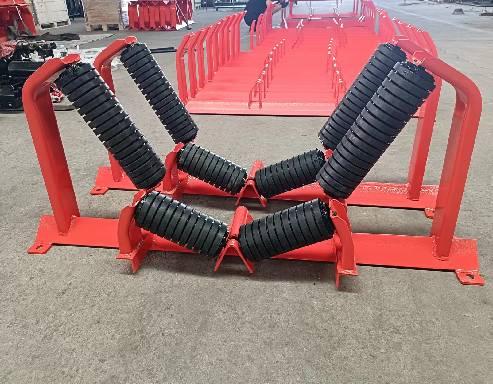 Afrikaans
Afrikaans  Albanian
Albanian  Amharic
Amharic  Arabic
Arabic  Armenian
Armenian  Azerbaijani
Azerbaijani  Basque
Basque  Belarusian
Belarusian  Bengali
Bengali  Bosnian
Bosnian  Bulgarian
Bulgarian  Catalan
Catalan  Cebuano
Cebuano  Corsican
Corsican  Croatian
Croatian  Czech
Czech  Danish
Danish  Dutch
Dutch  English
English  Esperanto
Esperanto  Estonian
Estonian  Finnish
Finnish  French
French  Frisian
Frisian  Galician
Galician  Georgian
Georgian  German
German  Greek
Greek  Gujarati
Gujarati  Haitian Creole
Haitian Creole  hausa
hausa  hawaiian
hawaiian  Hebrew
Hebrew  Hindi
Hindi  Miao
Miao  Hungarian
Hungarian  Icelandic
Icelandic  igbo
igbo  Indonesian
Indonesian  irish
irish  Italian
Italian  Japanese
Japanese  Javanese
Javanese  Kannada
Kannada  kazakh
kazakh  Khmer
Khmer  Rwandese
Rwandese  Korean
Korean  Kurdish
Kurdish  Kyrgyz
Kyrgyz  Lao
Lao  Latin
Latin  Latvian
Latvian  Lithuanian
Lithuanian  Luxembourgish
Luxembourgish  Macedonian
Macedonian  Malgashi
Malgashi  Malay
Malay  Malayalam
Malayalam  Maltese
Maltese  Maori
Maori  Marathi
Marathi  Mongolian
Mongolian  Myanmar
Myanmar  Nepali
Nepali  Norwegian
Norwegian  Norwegian
Norwegian  Occitan
Occitan  Pashto
Pashto  Persian
Persian  Polish
Polish  Portuguese
Portuguese  Punjabi
Punjabi  Romanian
Romanian  Russian
Russian  Samoan
Samoan  Scottish Gaelic
Scottish Gaelic  Serbian
Serbian  Sesotho
Sesotho  Shona
Shona  Sindhi
Sindhi  Sinhala
Sinhala  Slovak
Slovak  Slovenian
Slovenian  Somali
Somali  Spanish
Spanish  Sundanese
Sundanese  Swahili
Swahili  Swedish
Swedish  Tagalog
Tagalog  Tajik
Tajik  Tamil
Tamil  Tatar
Tatar  Telugu
Telugu  Thai
Thai  Turkish
Turkish  Turkmen
Turkmen  Ukrainian
Ukrainian  Urdu
Urdu  Uighur
Uighur  Uzbek
Uzbek  Vietnamese
Vietnamese  Welsh
Welsh  Bantu
Bantu  Yiddish
Yiddish  Yoruba
Yoruba  Zulu
Zulu Exploring the Benefits of Flat Return Idler in Conveyor Systems
Understanding Flat Return Idlers A Comprehensive Overview
In the world of conveyor systems and bulk material handling, components like flat return idlers play a crucial role in ensuring efficient operation. These seemingly simple pieces of equipment are integral to the conveyor's performance, longevity, and maintenance. This article delves into what flat return idlers are, their functions, benefits, and considerations for selection and maintenance.
What is a Flat Return Idler?
A flat return idler is a type of roller used in conveyor systems specifically designed to support the return section of a conveyor belt. Unlike other idlers that may have a slightly curved or shaped design to guide the belt, flat return idlers feature a flat surface. This design contributes to the stability and alignment of the conveyor belt as it returns to the head pulley for reloading or reinsertion into the material handling cycle.
Return idlers are installed underneath the conveyor belt in the idle or non-load-bearing section, typically at the tail end of the conveyor. Their primary task is to ensure that the belt travels smoothly, maintaining proper tension and alignment. Any misalignment can lead to increased wear and tear, affecting the system's efficiency and potentially resulting in costly downtime.
Functions and Benefits
The primary functions of flat return idlers include
1. Support and Guidance They provide essential support to the return side of the conveyor belt, ensuring that it remains stable and correctly aligned throughout its travel.
2. Wear Resistance Flat return idlers are designed to withstand the abrasive nature of the materials being transported, thereby prolonging the life of both the idlers and the conveyor belt.
3. Reduced Friction By providing a smooth surface for the belt to glide over, flat return idlers minimize friction and wear, leading to less energy consumption and improved operational efficiency.
5. Versatility They are suitable for various applications across industries such as mining, manufacturing, and logistics, making them a versatile choice in material handling systems.
Considerations for Selection
When selecting flat return idlers for a conveyor system, several factors should be considered
flat return idler

1. Load Capacity It is essential to choose idlers that can handle the expected load and stress levels of the materials being transported. Overloading can lead to premature failure.
2. Material Compatibility The materials used for constructing the idlers should be compatible with the type of material being transported. For example, using heavy-duty steel for abrasive or heavy materials can significantly increase durability.
3. Environmental Conditions Consider environmental factors such as moisture, temperature extremes, and exposure to chemicals that can affect idler performance and lifespan.
4. Belt Width The width of the conveyor belt will dictate the size and spacing of the idlers. Proper alignment and support are crucial to prevent belt damage.
5. Installation and Maintenance Needs Evaluate whether the idler design facilitates easy installation and ongoing maintenance, as this can impact overall system downtime and costs.
Maintenance Best Practices
Regular maintenance of flat return idlers is critical to ensuring their optimal performance
- Inspection Periodically check for signs of wear, misalignment, or damage. Early detection can prevent larger issues down the line.
- Lubrication Ensure that bearings are correctly lubricated to minimize friction and wear.
- Replacement When idlers show significant wear or damage, replace them promptly to avoid conveyor disruption.
- Belt Tracking Regular monitoring of belt tracking and alignment can help prevent undue stress and wear on both the belt and the idlers.
Conclusion
Flat return idlers are essential components in conveyor systems that ensure materials are transported efficiently and safely. By understanding their functions, considering key factors for selection, and implementing robust maintenance practices, operators can significantly enhance the reliability and effectiveness of their material handling operations. Investing in high-quality flat return idlers not only ensures smooth operations but also extends the lifespan of the entire conveyor system, offering long-term cost savings and improved productivity.
-
Revolutionizing Conveyor Reliability with Advanced Rubber Lagging PulleysNewsJul.22,2025
-
Powering Precision and Durability with Expert Manufacturers of Conveyor ComponentsNewsJul.22,2025
-
Optimizing Conveyor Systems with Advanced Conveyor AccessoriesNewsJul.22,2025
-
Maximize Conveyor Efficiency with Quality Conveyor Idler PulleysNewsJul.22,2025
-
Future-Proof Your Conveyor System with High-Performance Polyurethane RollerNewsJul.22,2025
-
Driving Efficiency Forward with Quality Idlers and RollersNewsJul.22,2025





























